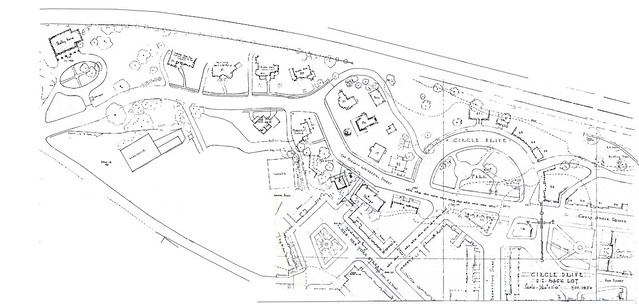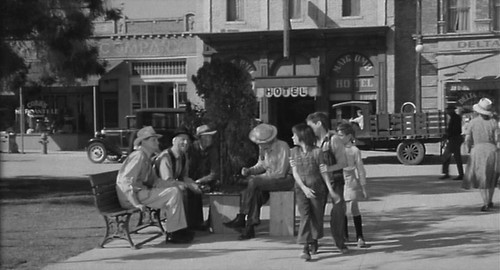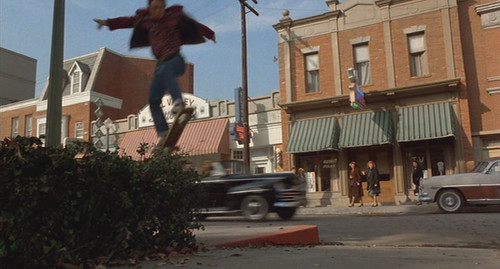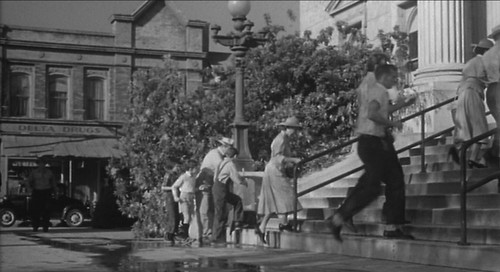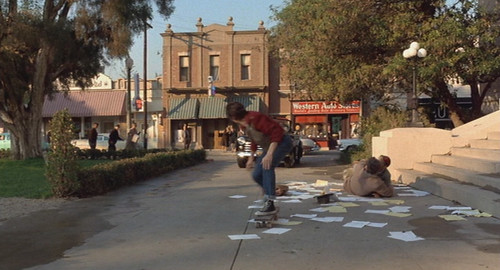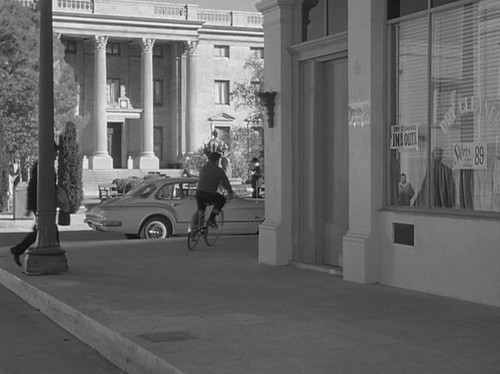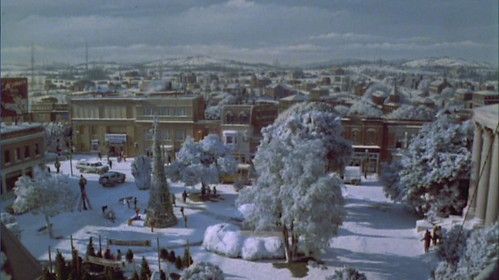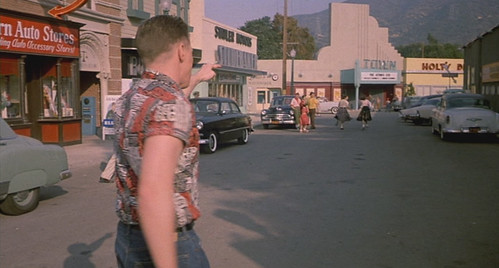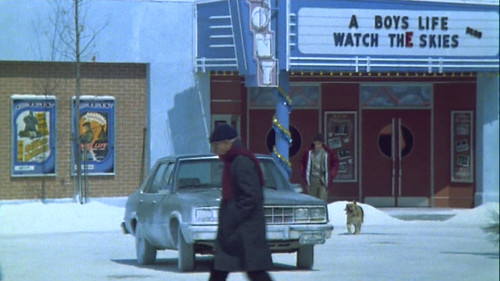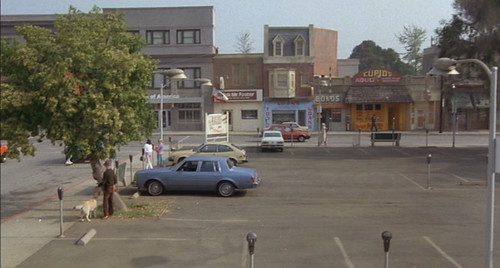As an urban planner and a filmy watchy guy, I’m particularly fascinated by the way our ideas about cities and towns are shaped by the environments we see in film and television. You can get a giant size chunk of my research on this by reading the essay here, but as another little snippet, consider Hill Valley in Back to the Future.
Here’s a shot of Hill Valley from the 1950s segment of Back to the Future (you can click on any of these shots for a better look). It’s the classic little small town, with a courthouse, shops, park and so on. (Again, my essay on this talks in tedious detail about the classic features of such a town centre.) Yet it’s not just classic: it’s actually ubiquitous. We see that same Hill Valley town over and over again, because it was filmed on Universal’s backlot, setting for countless such scenes over half a century.
Here’s a map of the Universal backlot as it was in 1950, courtesy of the flickr photostream of Dennis Dickens, who has collected an enormous amount of material about the backlot.
At the centre of the map is “Colonial Street,” the classic residential street set used in many films and TV shows, including Leave it to Beaver. To the right of that is “Circle Drive,” a semi-circular piece of parkland surrounded by housing shops and civic buildings. And then, to the southeast of that, in the bottom right of the map, is “Courthouse Square,” the classic town centre set. (The streets at centre bottom are big city streets, though they were sometimes employed as small town streets too.)
What’s interesting is how little this artificial town changed over the years it was in use. Here it is in one of my favourite film stills of all time, from Tarantula (1955 – the same year Back to the Future is set.) This view is looking along the north side of the square, with the courthouse location just off the right of screen.
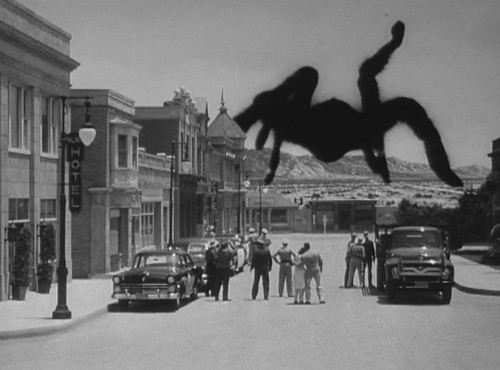 Here’s a great overview from Inherit the Wind, in 1960, in which it portrays a town from 1925. This one you really will need to see the larger version for.
Here’s a great overview from Inherit the Wind, in 1960, in which it portrays a town from 1925. This one you really will need to see the larger version for.
Here it is acting as a southern rural town from the 1930s in 1962’s film of To Kill a Mockingbird, with a comparison from Back to the Future showing the same corner of the set and giving a sense for how little had changed.
Another two shots from the same productions and the same corner of the set, showing the front of the courthouse:
The same set was used in Leave it to Beaver from the third season onwards. Here are a couple of shots from that season, which aired in 1959. Both show the view from near the northwest corner of the square (at the interface with Circle Drive). The small shop on the corner is one of the most prominent locations on the set: it would be reconfigured as the diner in Back to the Future and the bank in Gremlins (1984).
Speaking of Gremlins, here’s a shot of the whole square from that film. Obviously this is enhanced with matte painting.
This shot from Back to the Future Part II shows the street besides the courthouse 44 years after the view from Tarantula; below it is a view of the same cinema (visible at the rear) in Gremlins.
In Gremlins the town still looks much like the classic small town, which is of course part of the point, since that film is intended as a riff on small town films (notably It’s a Wonderful Life). The fast food signage is the main tip-off that it’s the 1980s.
However, to round out this tour, it’s worth finishing on Back to the Future‘s more cynical view of the 1980s small town. For such a feel-good film it is surprisingly pointed about the state of the built environment in 1985. As you may remember, many of the 1985 scenes are set in the carpark of the local mall and along unattractive highway-side strips (filmed in Burbank). And when we do see the town centre, we find it has gone drastically downhill since 1955, with the park paved over for carparking, and many shops either closed or replaced with sex shops, pawnbrokers, and the like. Even before the nightmare 1985 of Back to the Future Part II Zemeckis was pretty downbeat about the fate of traditional town centres.
For more on the set, I suggest you look at Kipp Teague’s invaluable pages (starting here), which were particularly helpful in assisting me in tracking down the Leave it to Beaver shots, and also at Dennis Dicken’s photostream (here). I have written a subsequent post about the attached residential street, Colonial Street, here.

